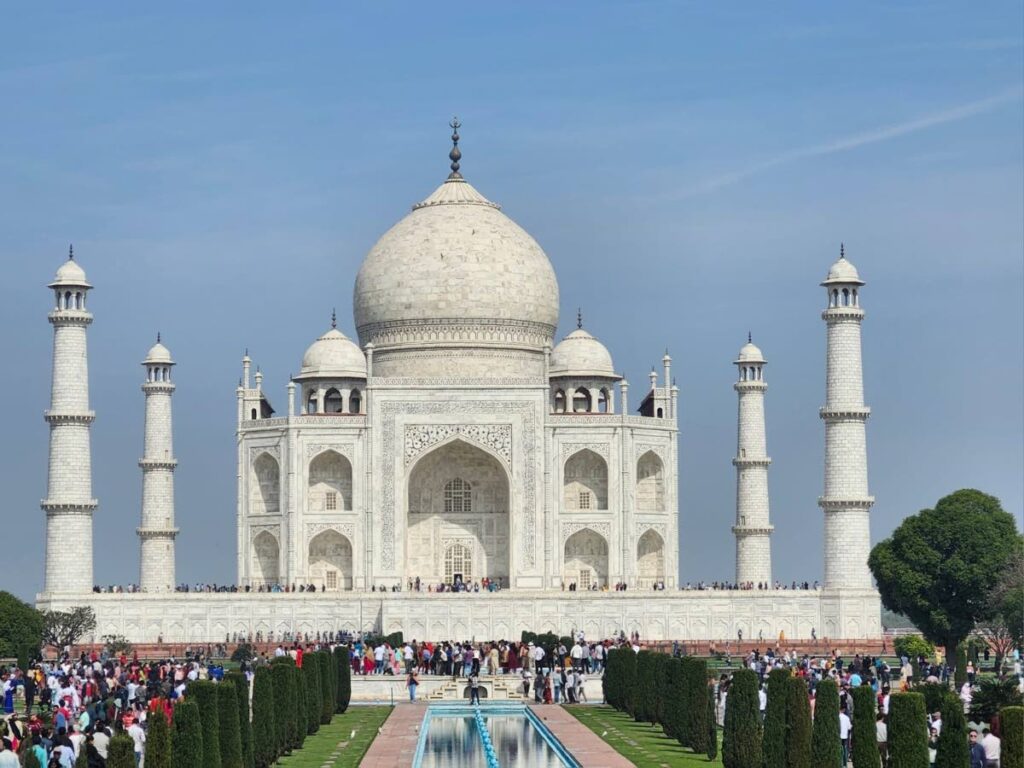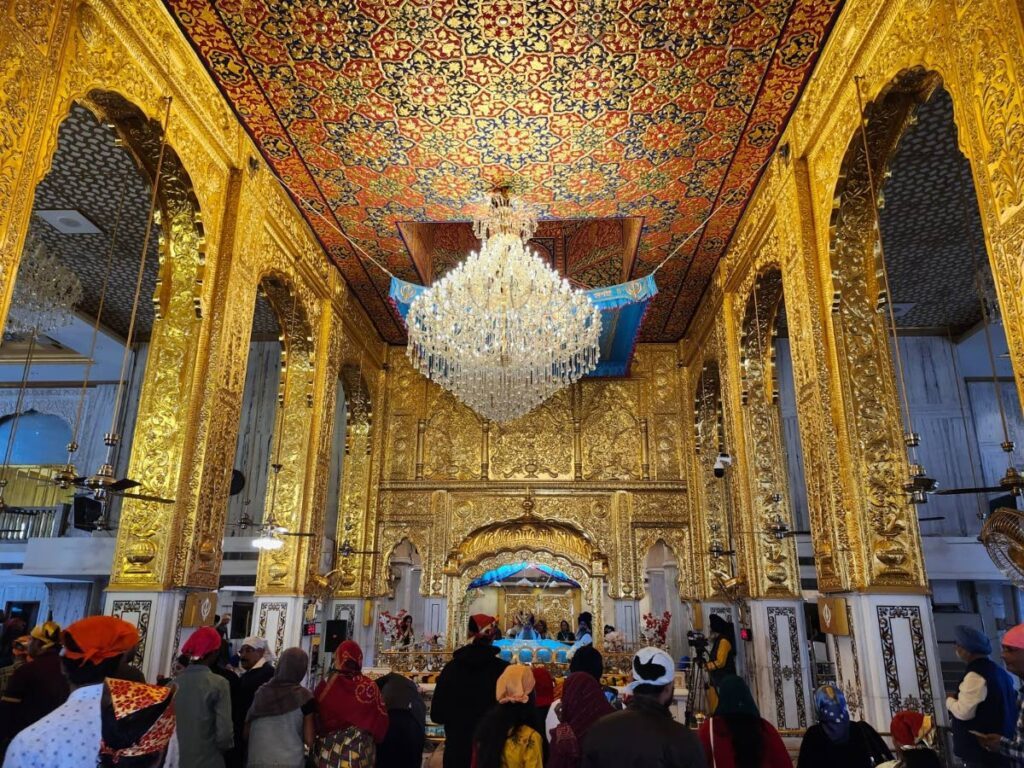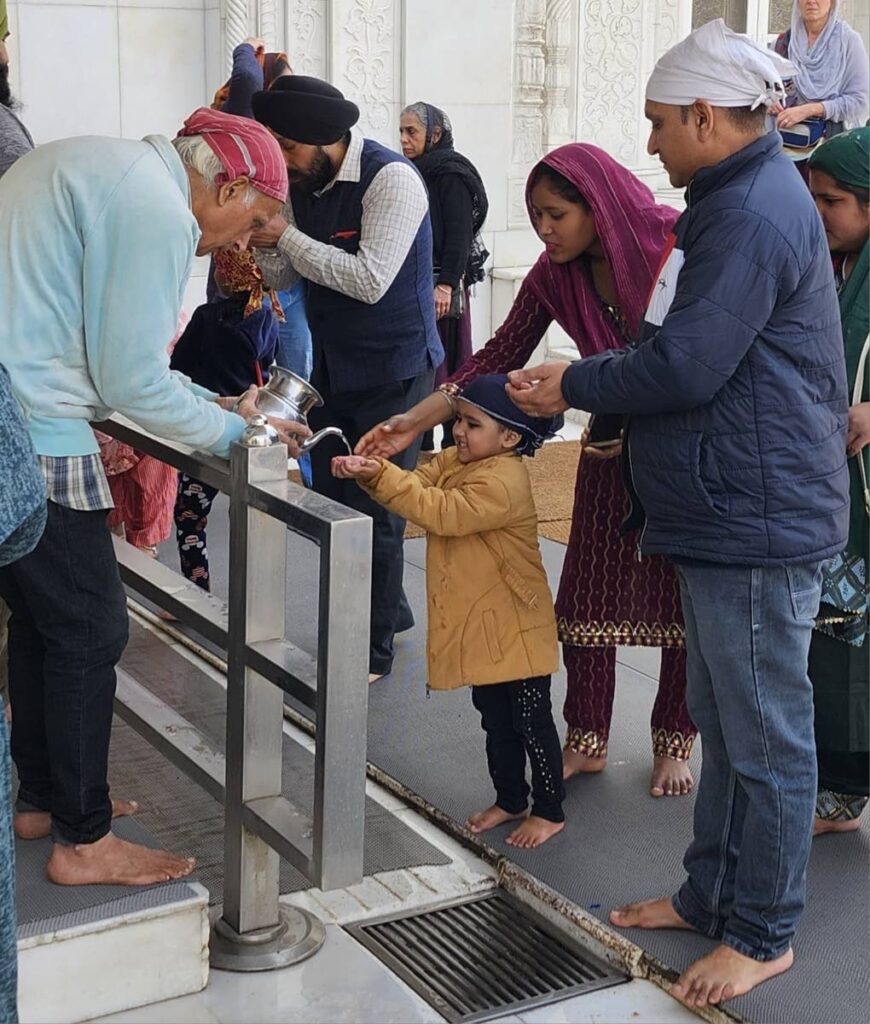Breathtaking, daunting India is calling

India is calling.
Her government wants the world, including Latin America and the Caribbean, to know what her politics and policies are, her advancements and struggles, how she deals with everyday issues and her philosophies on big-ticket global issues such as climate change and the need to go green.
India wants the world to get to know her.
Hence the reason for its Government hosting journalists from the Caribbean and Latin America on a seven-day media sensitisation tour in February.
Media practitioners from Caribbean countries including Barbados, Belize, Grenada, TT, St Vincent, Suriname and Guyana, as well as Latin American countries Argentina, Brazil, Chile, Colombia, Costa Rica, Ecuador, Panama, Paraguay, Peru, Uruguay, El Salvador and Honduras all participated.
I was asked to represent Newsday on this tour and the first eye-opener was the distance from Piarco to New Delhi, India's capital.
It took about four hours from Piarco to JFK airport in New York, and then a monstrous 15-hour flight from New York to Indira Gandhi Airport in Delhi. Many times during that flight, I begged the stewardesses to ask the pilot if he could stop on some cumulus so I could get out and stretch my legs. They pretended not to understand me.

Sitting in the lobby of the swank Le Meridien Hotel in Delhi, my first order of business was to damage Caricom integration and relations when, after hearing my media colleague Nadia Slater speak and listening to her accent, I made the wrong assumption and asked where in Jamaica she was from.
An indignant Slater declared, “Me not from Jamaica, me is Vincey!”
My error threatened to push TT’s diplomatic relations with St Vincent and the Grenadines back 30 years. The glare she gave me was enough to kill that conversation dead in the waters of the Caribbean Sea.
Enter Dawne Parris, another Caribbean media colleague, to save my skin and Caricom. Her accent was as crystal clear as the morning sea in Speightstown. “You are from Barbados, right?” I asked Dawne, who nodded in the affirmative.
India is a living, breathing lesson in contrasts. But that’s the beauty of why she is hardly ever not in the world news. There is never a dull day there.
From farmers protesting over minimum support prices for their goods, to a child happily playing near her mother who is busy making chapatis (a type of flat bread similar to TT’s sada roti, but thinner) to sell.
From three-wheeled CNG-powered rickshaws to sleek Mercedes Benz and human-powered vegetable stalls on wheel, from well-groomed huskies walking their human pets to wild macaque monkeys scavenging on the pavement – India is beautiful even with all of her imperfections.
Here are some snippets of my time there.
Taj Mahal, a legacy of love
Two hundred and 21 km from Delhi, or a little over four hours of travelling in a bus, lies the city of Agra in the state of Uttar Pradesh.
In this place, 392 years ago, a Mughal emperor named Shah Jahan was overcome with grief over losing his favourite wife, Mumtaaz. He turned his grief, despair and love into a 17-year project, building a mausoleum of ivory-white marble where, to this day, while he and Mumtaaz lie in eternal sleep below, over 100,000 people daily visit the Shah’s enduring and endearing love legacy – the Taj Mahal.

The government loves and reveres this monument, and rightly so. Everyone, from politician to pauper; Bollywood star to rickshaw driver; Newsday journalist to Delhi tour guide, must wear a protective fitted piece of cloth over their shoes before entering the hallowed sanctum of the Taj Mahal. There are no exceptions.
Thousands streamed through the Taj Mahal in the three hours I spent there with my media colleagues. The human flow took place whilst nearby, water flowed quickly along the mighty Yamuna River which borders the Taj Mahal.
The Taj Mahal deserves its billing as a Wonder of the World and no visit to India, let alone a planned tour, should ever be undertaken without a trip to this magnificent testament to love.
Indian coffee and Delhi belly
At first glance, India’s Trade and Commerce Minister Piyush Goyal’s demeanour was that of a scholarly type. So, when he arrived for a meet-and-greet, my expectation was a slow, methodical and ministerial interaction replete with officialdom.
But Goyal brought out his inner Basdeo Panday when, while sipping on some black coffee, an errant journalist from Colombia tried to make a plug for his nation's brew.
“Good day, señor minister Goyal,” Mr journalist started.
“I am from Colombia and I am muy pleased to see you like black coffee which, as you know, is from Colom...”
Goyal: “Wait, wait, wait. Let me be clear…this is Indian black coffee!"
The room exploded with laughter and the flummoxed journalist continued to his next question meekly, before sitting down.
Goyal dealt with the very well-behaved Caribbean journalists, who asked intelligent questions. He then gave as good as he got from the Latin American journalists, who apparently came with an agenda, and demanded to know why India was anti-trade against Latin American countries.
“Listen,” Panday, err, Goyal snarled. “I want trade. I do trade. India trades hundreds of millions of dollars annually with its partners in Latin America. But why should India bend over backwards to do trade with some Latin American countries which have been critical of India’s trading policies and systems?”
Later, I was laid low by the infamous Delhi belly (a vicious stomach bug reputed to hit innocent, law-abiding visitors via ingestion of tap water). How I got it remains a mystery, since I steadfastly avoided drinking tap water at all costs, even using bottled water to brush my teeth.
Other journalists would also fall ill at various times during the tour.
I was out for all of the day and missed some assignments. But when Delhi belly comes calling, all must bow and sit down...on the toilet.
Driving chaos
Why there are white demarcation lines on the streets and highways is anyone's guess. No Indian citizen, whether riding a motorcycle, driving a rickshaw, a bus, a truck or a car, seemed to follow these lines. Every driver's primary aim is to be first in the chaotic daily drive and ride on India's roads.

Riding in a rickshaw and seeing the solid metal backs of buses rush up to me, only for the driver to stop at the last second before crunching impact, left me saying prayers to both my Christian and Hindu gods, as well as to the gods of the wind, earth, water and fire.
There is no such thing as order in driving in India. Yet somehow, I saw not one collision. Every driving manoeuvre made chaotic sense to drivers who got to their destinations in a manner only they would know. For most of my trips in rickshaws, I kept my eyes closed and my head bent forward, bracing for impact. Another thing: how four people could fit on a motorcycle is beyond me. But in India, that is the norm.
"We don't do slow in India," said Chandresh Pavan, one of our guides sent by India's Ministry of External Affairs, when I asked about the driving styles. "Look, don't try to understand the mechanisms and the hows...just know there is order even in what appears to be chaos to you.
"India is in a race to be the best and to be first, even in its driving habits," he said with a chuckle.
Temples and devotion
I was only able to tour the Laxmi Temple in Delhi and then the grand Sikh temple of worship, the Gurdwara Bangla Sahib. The former is a palatial yet dignified place of worship while the latter is an even grander place of worship, but with more hustle and bustle.
What struck me and actually brought tears to my eyes was the level of devotion by the people coming to these temples.

I saw men and women lie face down and drag themselves towards whichever murti they chose to give their devotion and prayers. Parents would hold their babes and position them bowing forward until their little foreheads touched the ground in front of the chosen deity, be it Lord Ganesh (known as Ganapathi in Delhi), Lord Hanuman, Mother Saraswati, or some other.
Inside the main temple in Gurdwara Bangla Sahib, the walls and ceiling were covered in gold plates which were cool to the touch. No one is allowed to take photos or record videos inside these temples and I must beg pardon if I offend anyone, but I did take a photo inside. But in my defence, that was before I had seen the signs forbidding it.
A Sikh, holding a steel-tipped spear, and with a glare that would have made Om Puri (deceased Bollywood actor) very proud, soon made me aware of my transgression.
There is so much more that I could write about this visit, but my Sunday editor warned that anything over 1,800 words would face major editing surgery.
Also, in conclusion, this was a working trip, so the real "touristy" side of India such as Elephanta Island was not included in the itinerary.
In all honesty, I do not think one lifetime would be sufficient to go to every part of India, for it is a vast country: when seen from the air, the land merges into the horizon. But India will forever call out to anyone interested and with the wherewithal to visit her and partake in the delights and wonders of her culture, her people and her traditions.
A big Shukriya (thank you) to the Indian Government, the Indian High Commission in Port of Spain, and Newsday for affording me this opportunity to be a part of this tour.

Comments
"Breathtaking, daunting India is calling"